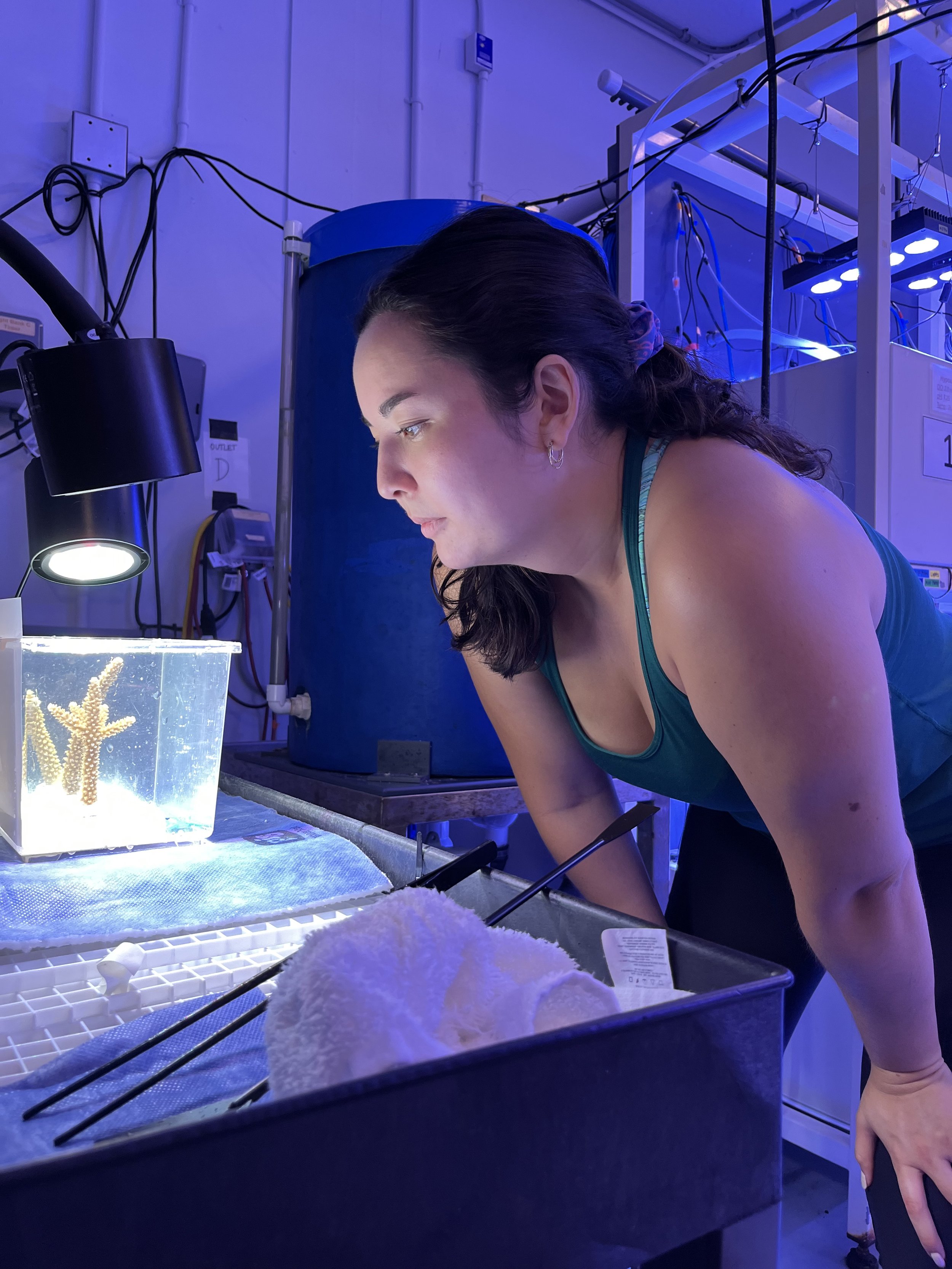 Image 1 of 5
Image 1 of 5

 Image 2 of 5
Image 2 of 5

 Image 3 of 5
Image 3 of 5

 Image 4 of 5
Image 4 of 5

 Image 5 of 5
Image 5 of 5






Giant Clam - Natural History & Ceramics Painting Masterclass - September 13
Please join us for an intimate and hands-on natural history and ceramics painting class where you will learn how to paint a Giant Clam (Tridacna gigas) with underglazes (ie the “paints” applied under the glaze).
This masterclass is part of our series where a marine biologist/ecologist will be in attendance and for this session we will be welcoming Dr. Ariel Pezner to our Coconut Crab studio again.
The Giant Clam is the largest bivalve mollusc, with the largest weighing over 200 kg and measuring more than 1.4 m wide. This unique group of species is found in a wide variety of mantle colours, created by interactions between symbiotic algae living inside the clam and the clam’s natural pigment. This vibrancy is an indicator of clam health—if the clam is unhealthy and they have lost their symbiotic algae, their mantles will bleach it to a bright white, just like corals.
Giant clams, when healthy, can live up to 100 years and remain on the reef for their entire life. Several species of Tridacna clams are found along the Great Barrier Reef and in the Coral Triangle in south-east Asia.
Dr. Ariel Pezner’s background focuses on ocean chemistry and oceanography, with particular emphasis on coral reefs. Her work often involves lots of field work snorkelling or diving, and has taken her across the world, from Taiwan, to Japan, Belize, and Australia. She has encountered many Giant clams during her field work, always stopping to admire their beauty. Like corals, Giant clams contribute to reef productivity and health, creating reef structure, providing shelter and food for other reef species, and growing calcium carbonate shells that eventually become the sand on our beaches. She will share more about their role on the reef, and current threats to their survival, during the class.
Participants will be given one of Casa Adams signature medium platters bisqued, with the species already monoprinted and ready to be painted. During the class, Araceli will share all the tricks and techniques she has mastered over the 13 years + she has been making and painting ceramics. All materials, as well as a delicious morning tea, are included. The platters will be glazed and fired in the studio and ready for collection approximately one week after. No previous experience needed!
Timings: 9am to 12pm
Location: The class will take place at our award-winning studio the Coconut Crab in Dulwich Hill, Sydney. The address will be given to confirmed participants closer to the date
***If you’d like to paint the coral reef on a dinner plate instead, there is an additional charge of $25. Just add this class to your cart and then add Dinner plate option for painting class to your cart as well.***
Please join us for an intimate and hands-on natural history and ceramics painting class where you will learn how to paint a Giant Clam (Tridacna gigas) with underglazes (ie the “paints” applied under the glaze).
This masterclass is part of our series where a marine biologist/ecologist will be in attendance and for this session we will be welcoming Dr. Ariel Pezner to our Coconut Crab studio again.
The Giant Clam is the largest bivalve mollusc, with the largest weighing over 200 kg and measuring more than 1.4 m wide. This unique group of species is found in a wide variety of mantle colours, created by interactions between symbiotic algae living inside the clam and the clam’s natural pigment. This vibrancy is an indicator of clam health—if the clam is unhealthy and they have lost their symbiotic algae, their mantles will bleach it to a bright white, just like corals.
Giant clams, when healthy, can live up to 100 years and remain on the reef for their entire life. Several species of Tridacna clams are found along the Great Barrier Reef and in the Coral Triangle in south-east Asia.
Dr. Ariel Pezner’s background focuses on ocean chemistry and oceanography, with particular emphasis on coral reefs. Her work often involves lots of field work snorkelling or diving, and has taken her across the world, from Taiwan, to Japan, Belize, and Australia. She has encountered many Giant clams during her field work, always stopping to admire their beauty. Like corals, Giant clams contribute to reef productivity and health, creating reef structure, providing shelter and food for other reef species, and growing calcium carbonate shells that eventually become the sand on our beaches. She will share more about their role on the reef, and current threats to their survival, during the class.
Participants will be given one of Casa Adams signature medium platters bisqued, with the species already monoprinted and ready to be painted. During the class, Araceli will share all the tricks and techniques she has mastered over the 13 years + she has been making and painting ceramics. All materials, as well as a delicious morning tea, are included. The platters will be glazed and fired in the studio and ready for collection approximately one week after. No previous experience needed!
Timings: 9am to 12pm
Location: The class will take place at our award-winning studio the Coconut Crab in Dulwich Hill, Sydney. The address will be given to confirmed participants closer to the date
***If you’d like to paint the coral reef on a dinner plate instead, there is an additional charge of $25. Just add this class to your cart and then add Dinner plate option for painting class to your cart as well.***
